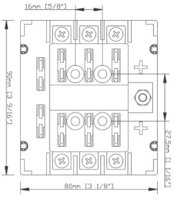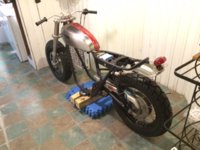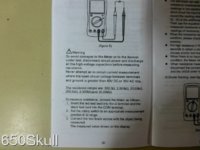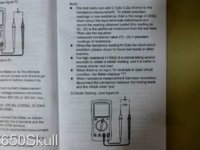Good morning boys. I would be grateful if you could help me organize the steps to making an electrical harness for my 1982 XS 650.
I've studied my Haynes manual, gone cross-eyed reviewing the great diagrams and comments in the Tech section, and I am now just dangerous enough to dive in, fire extinguisher by my side.
So a few questions
1) Should I start wiring the circuits in any particular order, is there a benefit to doing any one before another?
2) As I go along, what is a good way to test my work to determine if it is done properly? I have Mikes XS Probe tester (lights up) and a Radio Shack Multi Meter - but not any good at using them - yet.
3) What type of soldering iron would you recommend that I purchase, is there a "Soldering 101" / or Moto Wiring set up that I should tool up with?
I've googeld around on technique and have read the BASICS - but any motorcycle specific knowledge for soldering would again be much appreciated.
BACKGROUND:
- Custom electronics pan with Li-Ion battery (pics) OK, it is cardboard box that is the same size as a battery. I'm practicing JIT manufacturing
- BEP ATC Fuse block - branch circuit type so not an inline system (diagram)
- Mikes XS starter solenoid, in line Main Fuse
- TC Brothers Universal Ignition Switch
- After market turn signals and headlight - standard stuff
- LED Tail light
- Stock Reg/Rec, TCI, Alternator
- Using stock controls, starter
- Deleting sidestand switch and clutch switch
Thanks again guys!!
I've studied my Haynes manual, gone cross-eyed reviewing the great diagrams and comments in the Tech section, and I am now just dangerous enough to dive in, fire extinguisher by my side.
So a few questions
1) Should I start wiring the circuits in any particular order, is there a benefit to doing any one before another?
2) As I go along, what is a good way to test my work to determine if it is done properly? I have Mikes XS Probe tester (lights up) and a Radio Shack Multi Meter - but not any good at using them - yet.
3) What type of soldering iron would you recommend that I purchase, is there a "Soldering 101" / or Moto Wiring set up that I should tool up with?
I've googeld around on technique and have read the BASICS - but any motorcycle specific knowledge for soldering would again be much appreciated.
BACKGROUND:
- Custom electronics pan with Li-Ion battery (pics) OK, it is cardboard box that is the same size as a battery. I'm practicing JIT manufacturing
- BEP ATC Fuse block - branch circuit type so not an inline system (diagram)
- Mikes XS starter solenoid, in line Main Fuse
- TC Brothers Universal Ignition Switch
- After market turn signals and headlight - standard stuff
- LED Tail light
- Stock Reg/Rec, TCI, Alternator
- Using stock controls, starter
- Deleting sidestand switch and clutch switch
Thanks again guys!!









